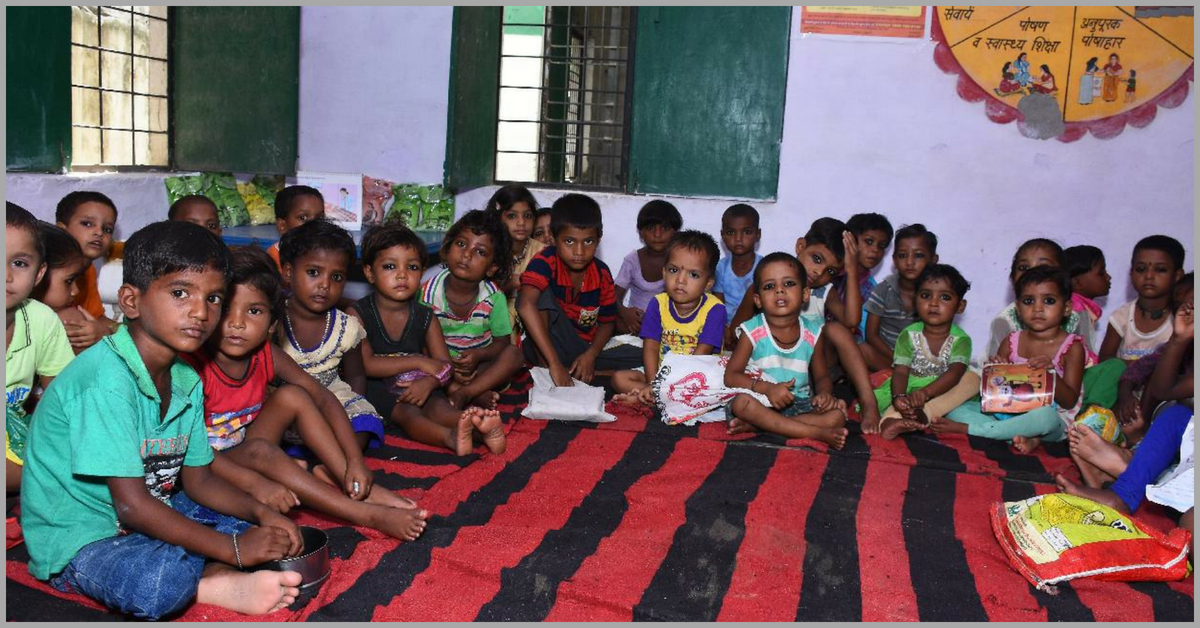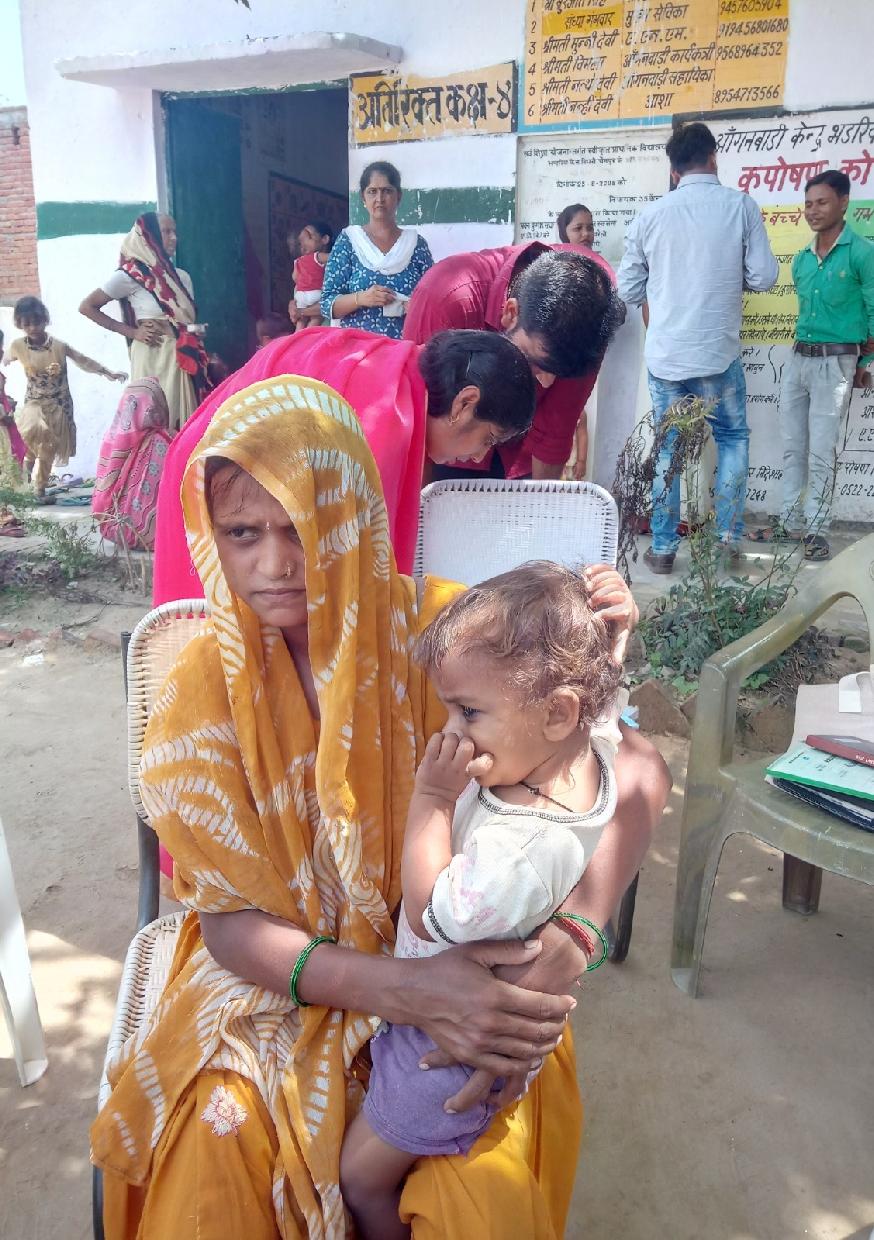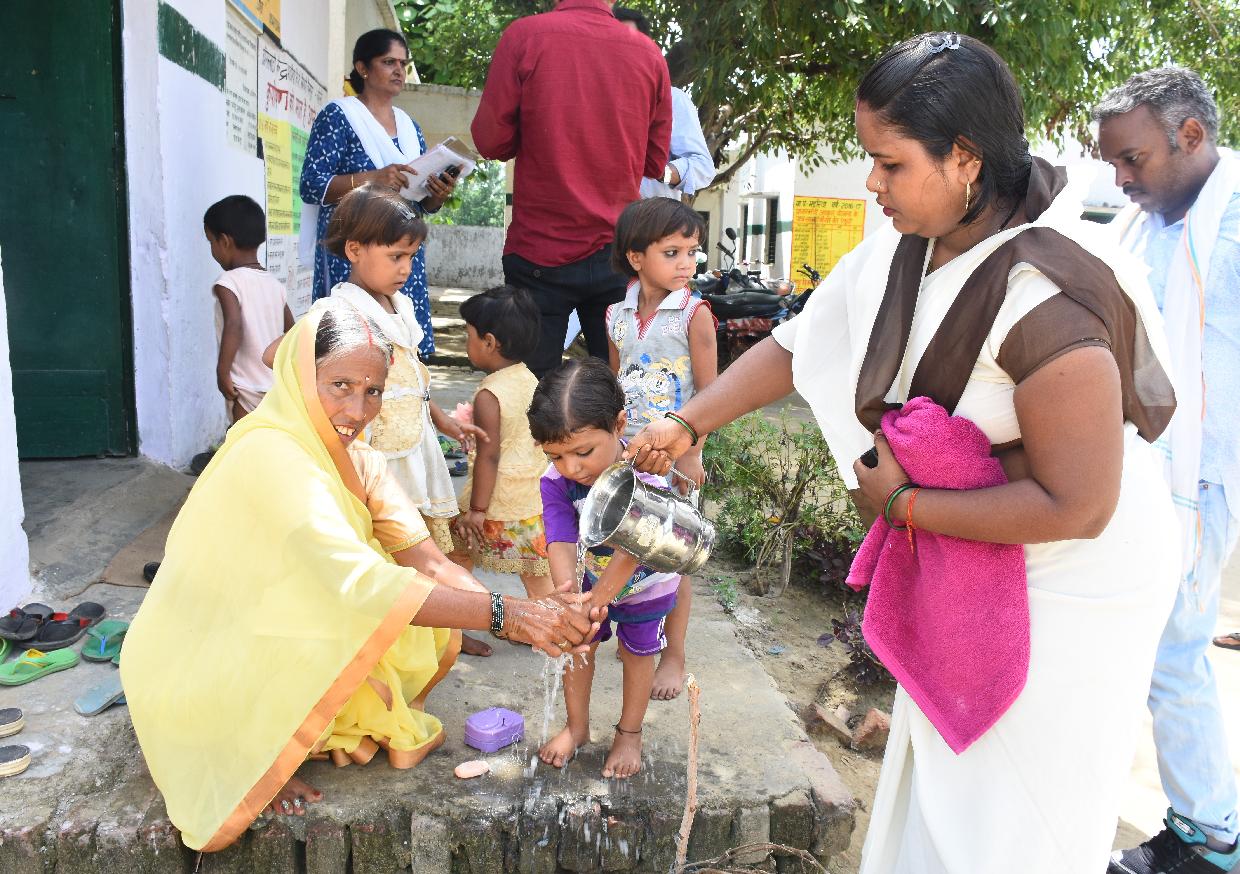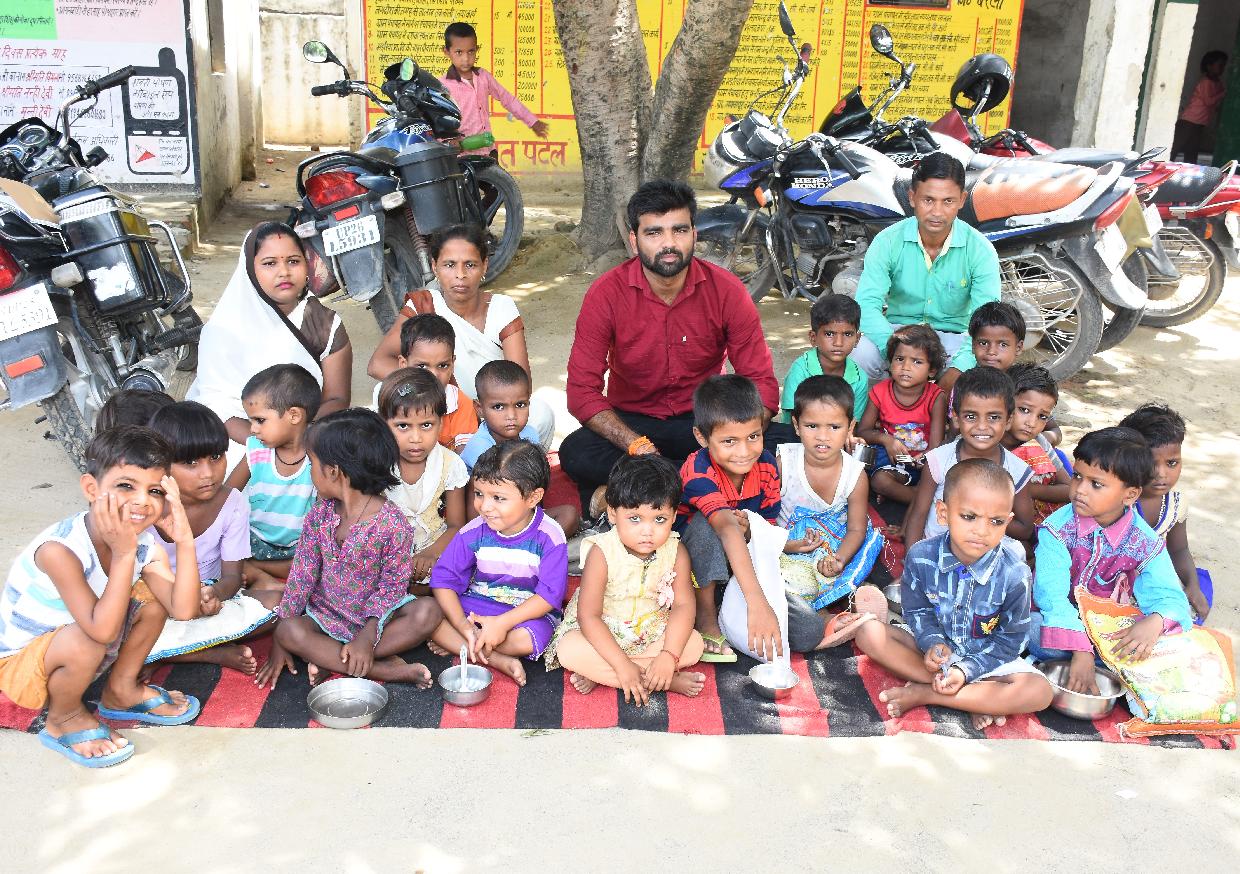98% of Children in This UP District Are Now Well Fed and Nourished. Here’s How!
A determined and collaborative action by numerous departments has led to a fall in malnutrition in the district.

Ayush was a weak seven-month-old baby at Bhandariya village in Bareilly district, Uttar Pradesh. He was not breastfed on time by his frail mother, who became pregnant again soon after his birth.
Introduced early to animal milk and top feeds, and weaned away from his mother’s milk, he lost weight and became malnourished. Following routine monitoring and diagnosis, health workers listed him under the red category (severe acute malnutrition) and registered him p009as a beneficiary at the ten-day Child Nutrition Session (Bal Poshan Satr).
At the session-end, Ayush had gained half a kg and weighed 5.5 kg. But, he was still not out of the red category. Hence, the child and his mother Sudha, who was also feeble, were referred by Accredited Social Health Activist (ASHA) workers to the Nutritional Rehabilitation Centre, where doctors took care of them for a fortnight.
Ayush was kept under observation and given supplementary nutritious diet at the centre in Bareilly city, nearly 14 km from Bhandariya. He weighed 6.2 kg and was listed in the yellow category (Moderate Acute Malnutrition or MAM).
Sudha was counselled on best nutrition practices, hygiene and sanitation. Once back home, Anganwadi worker, Vimla, and ASHA worker, Aarti Devi, ensured that the toddler continued eating nutritious food. Gradually, his health improved.
Now, at 14 months, he looks healthy, and weighs 8.5 kg, as he plays gleefully on his mother’s lap.

Like Ayush, ten other severely malnourished children in the village are out of red following concerted efforts under a joint initiative by the central and state governments, UNICEF, the IKEA Foundation, the Village Pradhan and unrelenting efforts of the Anganwadi and ASHA workers.
Initially, Sudha was unwilling to go to the NRC but was counselled by her husband (who resisted, at first) and his father, Ghanshyam, on the importance of breastfeeding, complementary feeding, dietary diversity, besides water and sanitation. “Ayush was quite weak and cried frequently. I used to give him roti and tea, his first meal, around noon,” says Sudha, who was then ignorant about child diet.
Vimla and Aarti played a major role in convincing Sudha and her husband. After repeated visits to their home and several interactive sessions, they agreed to attend the camp.
The special nutrition camps focused on building the capacity of caregivers for feeding children appropriately. This was done through demonstration of nutritious recipes, using supplementary nutrition distributed under the ICDS, at the Anganwadi centres.
Health workers, like Vimla and Aarti, have a tough challenge convincing parents who are mostly unaware of a nutritious diet for their child and averse to accepting their ignorance.

The workers regularly visit the parents and are persistent in their approach during counselling, advocacy and motivation sessions.
The awareness brought about an improvement in the nutritional status of the children (200-300 gm weight gain) and led to a change in child-feeding practices among families, an improvement in dietary diversity score (from intake of three food groups to five) and feeding frequency (from 2-3 times to 5-6 times). The programme injected a positive change in the attitude of the community towards the acceptability of Take Home Ration (provided under ICDS).
Two major contributors to this enterprise are Bareilly Chief Development Officer Satyendra Kumar, who has adopted Bhandariya and Balla Kotha villages–both in Bareilly district– and an unassuming Gram Pradhan, Amit Patel, 25.
Using his resources, Amit Kumar ensured that the toddlers received a regular supply of supplementary food. Besides, he distributed bananas, milk and eggs at the camp, saying, “I want to do something for my village, and this is just a small step.”
Satyendra Kumar says, “The dietary pattern of the children was quite poor, and they did not eat food at night. They were being given tea. Now, there is a perceptible change and much awareness.”
In Bareilly district, nearly 98 per cent children have been covered under the state nutrition mission.
Kumar adds that among the 3.7 lakh under-five population, severe underweight cases have reduced from 7.17 to 4.2 per cent in seven months, from November 2017 to June 2018.

Kumar credits the programme’s success to the convergence of major nodal departments such as health, education, rural development, sanitation and food, Panchayati Raj institutions, and joint execution of various schemes under these sectors, like the ICDS. A determined and collaborative action by these departments has led to a fall in malnutrition.
Also Read: How the Simple Act of Eating Together Is Tackling Malnutrition in Rural India
To operationalise the convergence strategy, district officials, including the District Collector and officers from different departments were asked to adopt one or two villages each. At the village level, Anganwadi centres are the cornerstones of nutrition activities.
However, Kumar says he would still not declare Bhandariya as a malnutrition-free village. “Though there is no child in the red category, it still has nine children in the yellow, indicating that they are at risk for acute malnutrition.”
The two pillars of the National Nutrition Mission (Poshan Abhiyaan) are convergence and behavioural change. During the first 1,000 days of a child’s life, optimum complementary feeding, coupled with adequate breastfeeding and timely management of common illnesses are game changers. Around 90 per cent of children between six months and two years are nutrition-hungry, and diarrhoea contributes to 25 per cent of undernutrition.
Besides, stunting is another aspect of malnutrition.
A joint WHO-UNICEF report was released before the start of World Breastfeeding Week on August 1. It said breastfeeding within the first hour of birth is crucial to the life, health and wellbeing of the newborn.
Also Read: As You Sow, so You Eat: How a Tuber and Some Tricks Beat Malnutrition Among Farmers
It also points out that three in five babies globally are not breastfed in the first hour of life. Too many newborns are left waiting too long to be breastfed within the first hour of their lives for different reasons such as feeding newborns food or drinks, including formula, gaps in the quality of care provided to mothers and newborns, and most surprisingly, the rise in C-sections.
To counter this, the Government has launched the MAA (Mother’s Absolute Affection) public awareness programme. In this regard, the support of ASHA workers in creating awareness in remote corners of the country has been remarkable.
(Written For The Better India by K V Venkatasubramanian and Edited by Shruti Singhal)
Like this story? Or have something to share? Write to us: [email protected].
Connect with us on Facebook and Twitter.
If you found our stories insightful, informative, or even just enjoyable, we invite you to consider making a voluntary payment to support the work we do at The Better India. Your contribution helps us continue producing quality content that educates, inspires, and drives positive change.
Choose one of the payment options below for your contribution-
By paying for the stories you value, you directly contribute to sustaining our efforts focused on making a difference in the world. Together, let’s ensure that impactful stories continue to be told and shared, enriching lives and communities alike.
Thank you for your support. Here are some frequently asked questions you might find helpful to know why you are contributing?


This story made me
-
97
-
121
-
89
-
167











